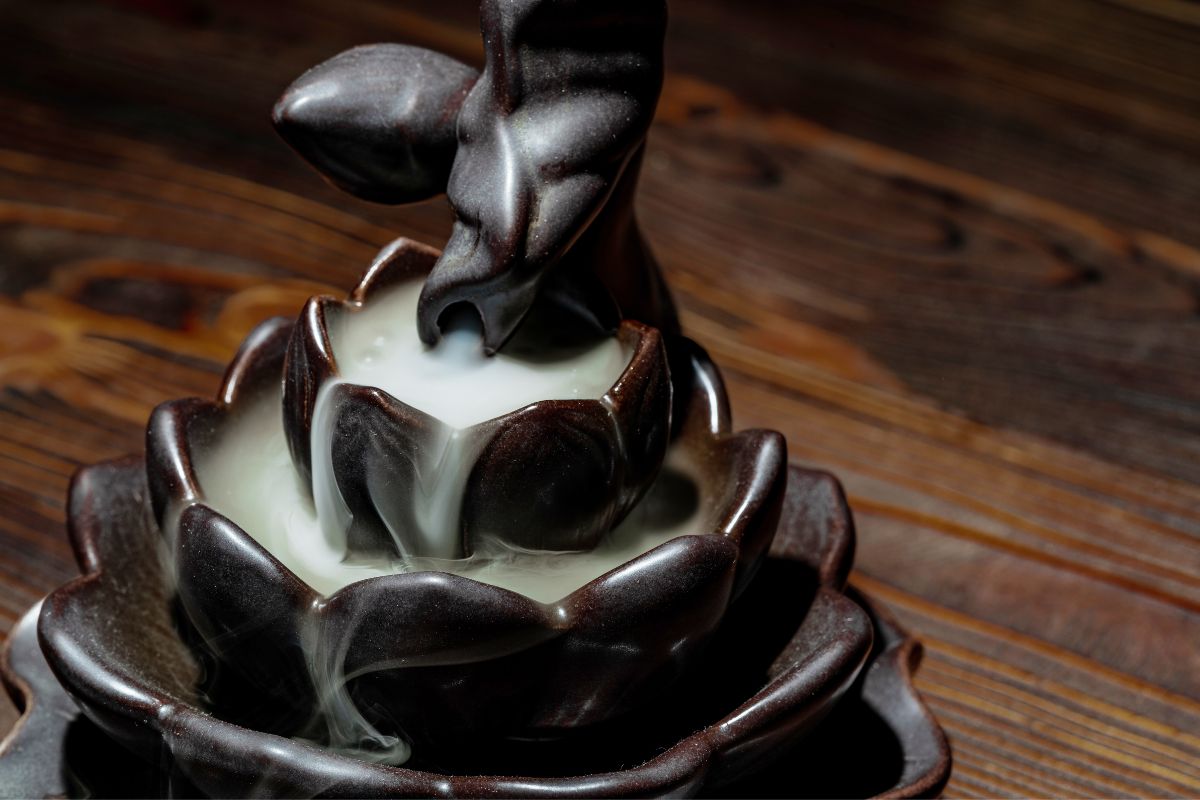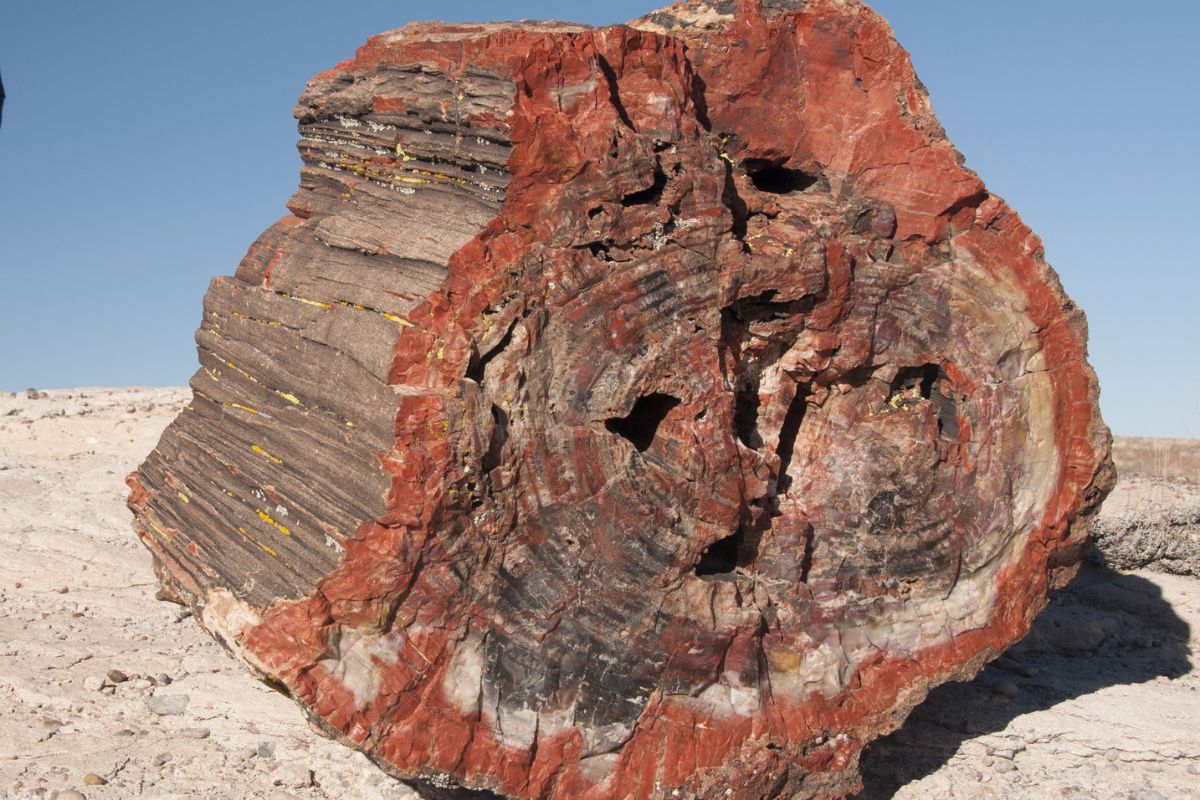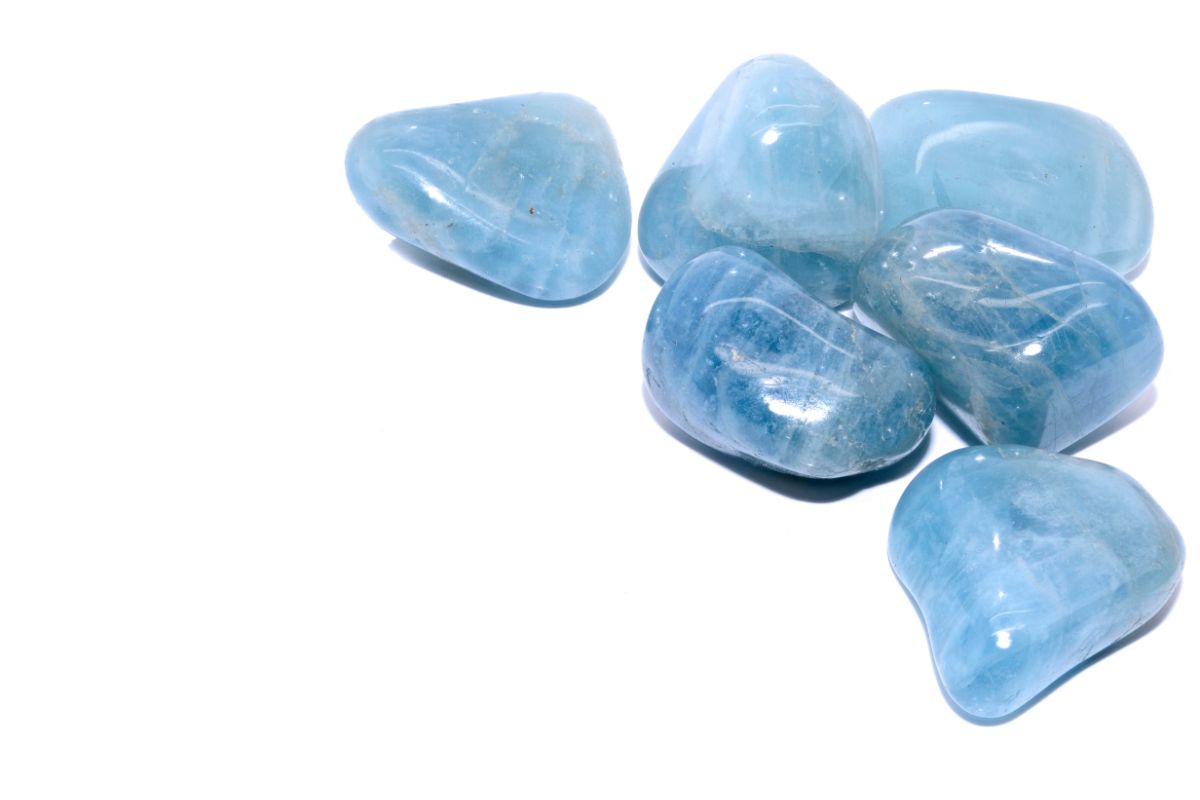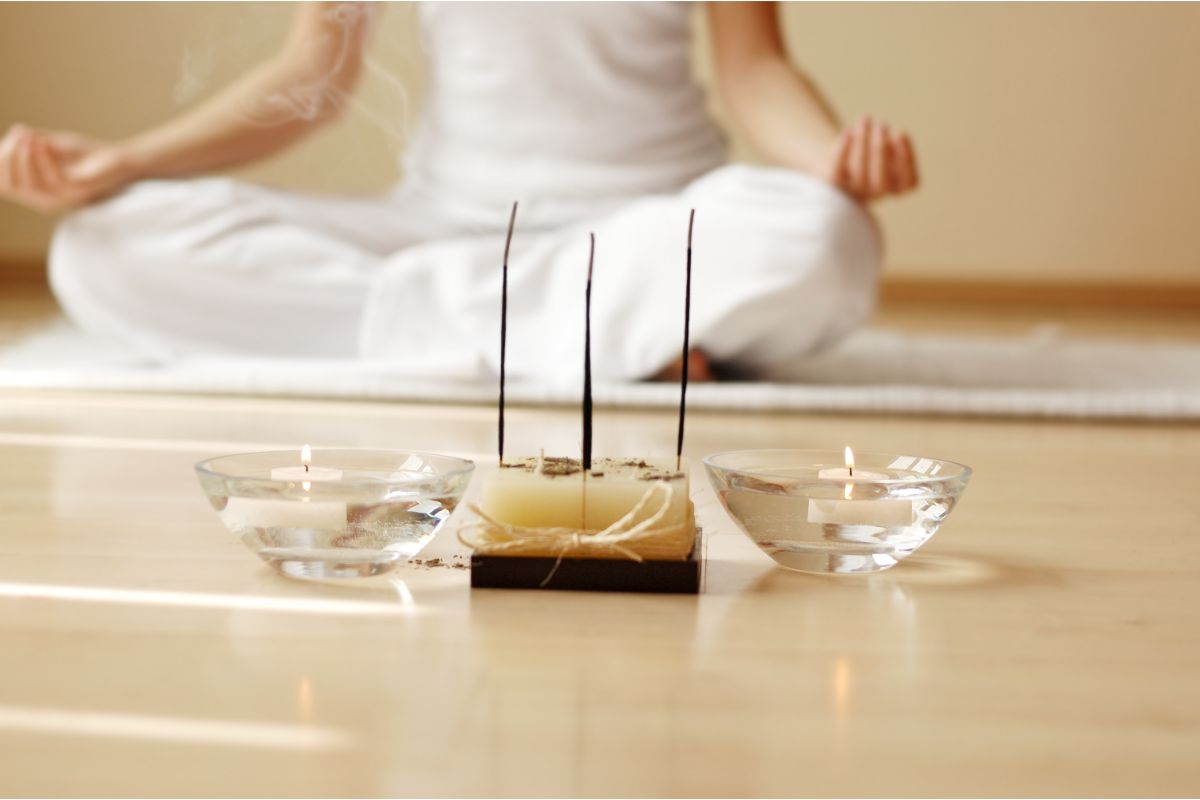Palo santo is a type of tree found natively in Peru. It is considered a mystical tree, hence its inclusion in mystical and spiritual ceremonies.
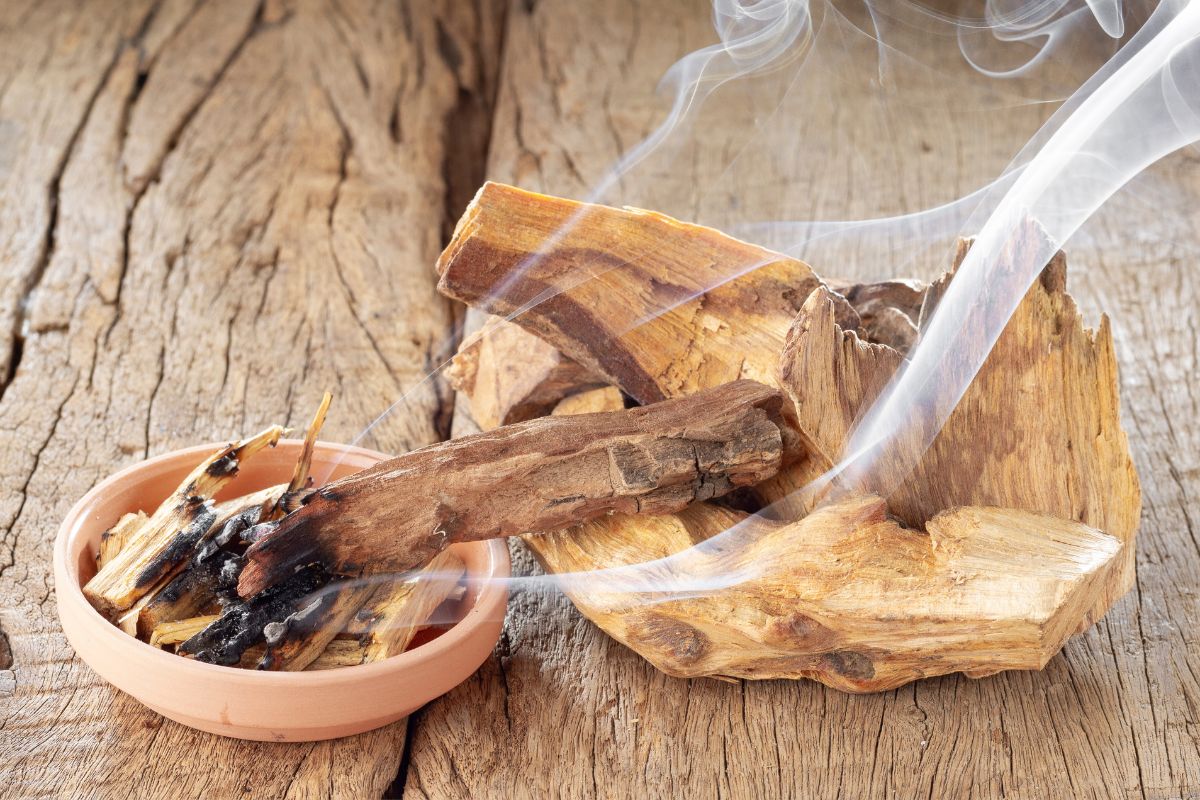
Specifically, it is said to heal inflammation and stomach ache. Palo santo’s name literally translates to “holy wood” or “holy stick.”
Many people use palo santo as a calming incense (see also ‘How to Use Incense Waterfall‘). But what exactly does it smell like? What benefits does it have to offer?
Continue reading to find out everything you need to know about palo santo!
What Does Palo Santo Smell Like?
Palo santo is known to have a wood-like aroma. Many people compare it to citrus scents, such as lemon.
However, others believe that the fragrance of palo santo is more comparable to pine or mint. It is quite sweet, though these sweet notes are subtle.
Some people have even drawn comparisons between the scent of palo santo and the fragrance of licorice.
Its fragrance is often confused with sage. Interestingly, sage and palo santo have similar uses.
While sage is designed to remove negativity from a space, palo santo is used to increase positivity.
Arguably, the best way of finding out what palo santo smells like is to experience it yourself.
This way, you can decide whether it smells more like mint, citrus, or licorice.
What Are The Benefits Of Palo Santo?
Palo santo is commonly burned for good reason. It is believed to have healing properties. Some of the benefits of burning this wood include:
1. It Can Less Pain
Palo santo is supposed to relieve pain from a few different afflictions, such as:
- Headaches
- Stomach ache
- Inflammation
- Muscle pain
- Cold and flu
The reason why palo santo works so effectively at relieving pain is unknown. However, it could be because it shifts energy in the body.
It’s important to bear in mind that while some people experience these healing effects, palo santo’s success is not conclusive.
2. It Purifies Energy
Have you been experiencing lots of negative energy of late? If so, it can be worth burning some palo santo.
This is because it is meant to boost positivity. It is purifying, meaning that it can remove negative energies from people and places.
3. It Has a Calming Smell
Aside from purifying energy, palo santo can relax people thanks to its smell. Most people enjoy the pleasant aroma of this wood, which will provide a relaxing atmosphere.
Palo santo is meant to activate the olfactory system of the brain, hence its calming effect. So if you’ve had a tough day at work, we recommend lighting some palo santo to help you relax.
4. It Can be Emotionally Healing
The healing properties of palo santo aren’t just limited to physical healing. It can also be utilized for emotional pain.
Likely because of the effect that it has on negative energies, it is used to repel depression and anxiety.
It is also used as a treatment for sleep disorders.
What Scents Can Be Paired With Palo Santo?
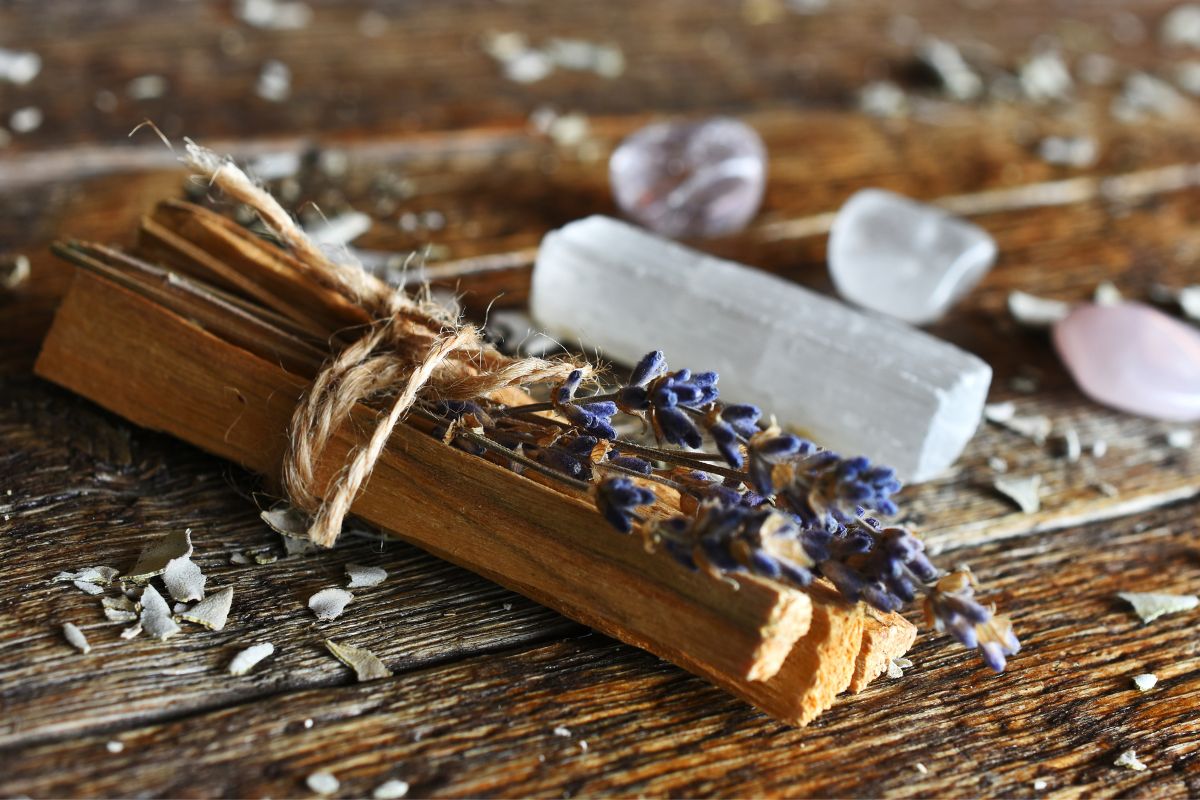
If you want to burn multiple incenses or fill your home with a certain scene, you will need to find fragrances that complement one another (see also ‘What Does Dragon’s Blood Smell Like‘).
We advise matching palo santo with sage. As mentioned, these two fragrances are often linked.
Sage will help you to remove negative energies, while palo santo can boost your positive energies.
Perhaps more importantly, sage and palo santo smell great together thanks to their similar aromatic properties (see also ‘What Does Sage Smell Like‘).
Most citrus fragrances, such as citrus oils, also harmonize with palo santo.
Frankincense is also a good match thanks to its woody qualities and citrus notes (see also ‘How to Burn Frankincense Resin‘). It will provide a balsamic aroma to palo santo that is quite enjoyable.
Finally, lavender-scented incenses also pair perfectly with palo santo.
Other floral aromas, including helichrysum, can go well with palo santo, though you may need to experiment with different scents.
How Is Palo Santo Used?
If you are interested in experiencing the smell of palo santo and wish to feel its benefits, you must first decide which form of palo santo you are going to use.
The good news is that this fragrance is available in numerous forms, such as:
- Palo santo wood: if you want to use palo santo as an incense, you will need to use palo santo wood. This wood will gradually burn, allowing it to unleash delightful aromas. If you want to fill a specific space, such as your home, with the scent of palo santo, wood burners are one of the best methods.
- Palo santo oil: it also comes in oil form, which can be inhaled or dropped onto certain parts of the body. This oil is placed on the skin to relieve pain from conditions, such as headaches.
- Palo santo powder: this powder works similarly to wood, in that it is burned as incense.
- Palo santo chips: these chips can be burned in a fire bowl, thus releasing the scent.
Frequently Asked Questions
Are There Any Side Effects To Using Palo Santo?
There are not any major side effects linked to the use of palo santo. Yet, you may experience some symptoms when utilizing it.
These side effects are particularly common among people who are using palo santo for the first time. If you commonly experience these side effects, it may be best to refrain from using palo santo again.
Moreover, we advise performing a patch test before using palo santo. This will allow you to determine whether palo santo causes allergic reactions.
What Fragrances Are Similar To Palo Santo?
Aside from sage, palo santo is often compared to myrrh and frankincense (see also ‘What Does Myrrh Smell Like‘). The reason for this is that they originate from the same tree family, called the Burseraceae.
Therefore, they all tend to have citrus-like undertones.
Final Thoughts
If you have been feeling stressed lately, it can be a great idea to burn palo santo.
This wood will fill your home with a relaxing aroma that can allow you to heal from physical and emotional pain. We love the scent of palo santo, so why not experience this fabulous fragrance yourself?!
- 15 Crystals That Cannot Be Exposed To The Sun - January 7, 2024
- Malachite Vs Fuchsite – Benefits And Uses - January 7, 2024
- Malachite Vs. Green Jasper: Benefits And Uses - January 7, 2024

